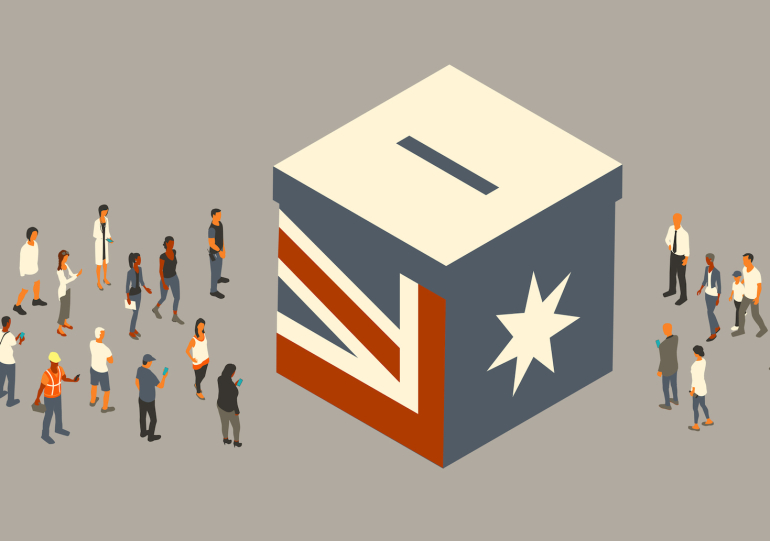The email arrived early, at breakfast time. The sender was a stranger, a health worker living in a place on the Hume Highway I’ve only driven through. He was asking for my help and he wrote with questions. All of them were about the referendum for Indigenous constitutional recognition and the voice.
Kevin said he appreciates the problems faced by Indigenous communities and genuinely wants to see real improvement in closing the gap. But he does not understand what he is being asked to vote for on October 14.
At this stage he was planning to vote no. He thought he’d email me “out of the blue”, as a constitutional law academic, to see whether I could provide answers to questions he thought were unclear to him and other people he knows.
Kevin’s questions showed his doubts about the referendum.
Why, for instance, were Australians being asked to vote on the creation of the voice body and not just constitutional recognition for Aboriginal and Torres Strait Islanders? Why wasn’t there more detail on what the voice would look like and how it might operate? How will the Constitution be different if the referendum succeeds?
Read more: How do the ‘yes’ and ‘no’ cases stack up? Constitutional law experts take a look
All important questions, for which there are good answers that each voter then needs to consider and make up their minds about.
The No camp tells Australians: “If you don’t know, vote no.” The same slogan was used by the opponents of the 1999 republic referendum and presumably played some part in their success.
It’s not surprising to see it rolled out again now. But as arguments go, “don’t know, vote no” is, frankly, contemptuous of the electorate. It tells people they probably can’t figure out the issues and, worse, they should not even try.
People can and will vote no on October 14 for many different reasons, as is their right. But is it too much to ask that no one should vote no because they “don’t know” and they’ve been reassured that this is somehow good enough?
If you think you already 'know' what you need to cast your vote, whether for or against the voice, ask yourself whether you’ve challenged your opinion enough. Have you tested your view against the strongest opposing argument?
The Indigenous delegates to the constitutional convention at Uluru in 2017 issued an express invitation to the rest of the country to walk with them. Given what is at stake, and the spirit with which that invitation was issued, an appeal to voters to decline it out of determined ignorance is shameful.
Admittedly, getting informed takes effort. While the official Yes/No booklet delivered to every household aims to provide access to both sides of the debate, the side-by-side competing arguments have probably fuelled uncertainty and confusion. But tools do exist that test and explain the arguments put forward by both campaigns.
My colleagues at UNSW have completed a comprehensive fact check of claims made by both sides in the booklet.
There are also other independent online resources by reputable experts. Some of the best of these are the Factsheets, including responses to FAQs, prepared by the Law Council of Australia. Undoubtedly, getting a firm grip on the conflicting messages in the debate is made harder by the fact Australians are rarely encouraged to engage with our Constitution.
Through no fault of their own, most have only a very limited understanding of what it says. An example of this is the No argument that a Yes result will divide the country by “putting race in the Constitution”. That sounds bad and a good reason to vote no – but it ignores the fact the Australian Constitution has had provisions, and deeply unpleasant ones, based on race since it entered into force in 1901.
Read more: Megan Davis and George Williams on key reasons to vote Yes in the Voice referendum
It’s certainly not the case that all Australians suddenly need a full crash course in constitutional law over the next month. But there are plenty of ways to get reliably accurate information relevant to this specific constitutional change, including not just text and recorded media, but also live events. Best of all is having conversations with those out in the community campaigning for your vote.
Talk to both sides and ask them to respond to the points you think are most compelling from the other side’s position. Importantly, if you think you already “know” what you need to cast your vote, whether for or against the voice, ask yourself whether you’ve challenged your opinion enough. Have you tested your view against the strongest opposing argument? Have you checked it against independent sources and then also in discussion with families and friends whose opinion you don’t just respect but who you know have a slightly different world view from your own.
Shortly after I had written back to Kevin with responses to his questions, he replied to say thanks. He said my answers were helpful, but he didn’t let on how he might vote – and that’s his business. I expect, and hope, he’s going to keep thinking and talking about it over the weeks ahead. He may only decide when he holds his ballot in the cardboard cubicle on October 14. But he’s certainly doing the work now to gather information and test his views before that moment. Are you?
Professor Andrew Lynch is the Dean of the Faculty of Law & Justice at UNSW Sydney.
This article was first published in The Australian. See the original article (payment required).
Authorised by Alison Avery for the University of New South Wales, Sydney
